 W
WAbutilon pitcairnense, the yellow fatu or yellow fautu, is a critically endangered perennial plant that is native to Pitcairn Island. It was once considered extinct, until a single plant was discovered on the island in 2003. At that time, cuttings and seed were used to propagate several plants at a nursery on the island and botanical gardens in Ireland and England. The last wild surviving plant died in a landslide in 2005, making the plant extinct in the wild.
 W
WBromus bromoideus, the brome of the Ardennes, is a species of grass in the genus Bromus. Genetic studies suggest that it rather should be regarded as a variant of Bromus secalinus.
 W
WBromus interruptus, commonly known as the interrupted brome, is a flowering plant in the grass family. It is endemic to southern and central England, which became extinct in the wild in 1972. After several decades in cultivation, the interrupted brome was re-introduced to Aston Rowant National Nature Reserve in 2004, marking the first known re-introduction of an extinct plant in Britain. The plant was a weed of waste places and arable agriculture, particularly of sainfoin cultivation. It can be distinguished from all other Bromus species by its deeply split, or bifid, palea.
 W
WCattleya schilleriana is a species of bifoliate Cattleya orchid.
 W
WThe bastard gumwood is a species of tree endemic to the island of Saint Helena. It was thought to be extinct, but one last tree was discovered in Horse Pasture in 1982. This tree, long believed to be the last, was destroyed in 1986 by a gale. However seedlings were grown from this tree before it perished. The last of these to survive in cultivation was damaged by gales in 2008 and the survival of the species was in doubt.
 W
WCorypha taliera is a species of palm, originally native to Myanmar (Burma) and the Bengal region of India and Bangladesh. It was first discovered by Scottish botanist William Roxburgh. It has been listed extinct in the wild in the IUCN Red list. The species is locally known as Tali Palm or Talipalm.
 W
WCryosophila williamsii, also known as Lago Yojoa palm or root-spine palm is a species of flowering plant in the family Arecaceae. It is found only in Honduras. It is threatened by habitat loss. Cryosophila williamsii is named in honor of prominent botanist Louis Otho Williams.
 W
WCyanea pinnatifida is a rare species of flowering plant in the bellflower family known by the common name sharktail cyanea. It is endemic to Oahu, but it is now extinct in the wild and only exists in cultivation. Like other Cyanea it is known as haha in Hawaiian.
 W
WCyanea superba is a rare species of flowering plant in the bellflower family known by the common names Mt. Kaala cyanea and superb cyanea. It is endemic to the island of Oahu, but it is now extinct in the wild. It exists in cultivation and some individuals have been planted in appropriate habitat. It is a federally listed endangered species of the United States. Like other Cyanea it is known as haha in Hawaiian.
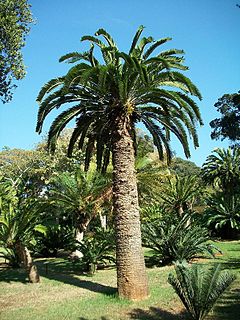 W
WEncephalartos woodii, Wood's cycad, is a rare cycad in the genus Encephalartos, and is endemic to the oNgoye Forest of KwaZulu-Natal, South Africa. It is one of the rarest plants in the world, being extinct in the wild with all specimens being clones of the type. The specific and common name both honour John Medley Wood, curator of the Durban Botanic Garden and director of the Natal Government Herbarium of South Africa, who discovered the plant in 1895.
 W
WErica verticillata is a species of Erica that was naturally restricted to the city of Cape Town but is now classified as Extinct in the Wild.
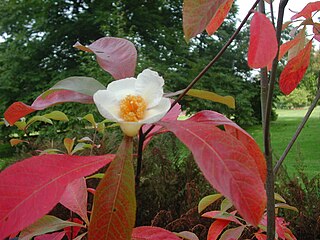 W
WFranklinia is a monotypic genus in the tea family, Theaceae. The sole species in this genus is a flowering tree, Franklinia alatamaha, commonly called the Franklin tree, and native to the Altamaha River valley in Georgia in the southeastern United States. It has been Extinct in the wild since the early 19th century, but survives as a cultivated ornamental tree.
 W
WFranklinia is a monotypic genus in the tea family, Theaceae. The sole species in this genus is a flowering tree, Franklinia alatamaha, commonly called the Franklin tree, and native to the Altamaha River valley in Georgia in the southeastern United States. It has been Extinct in the wild since the early 19th century, but survives as a cultivated ornamental tree.
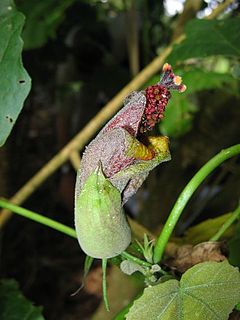 W
WHibiscadelphus giffardianus is a species of flowering plant in the mallow family, Malvaceae, that is endemic to the Big Island of Hawaii. It is believed to be extinct in the wild; any remaining plants are threatened by habitat loss. Cultivated plants exist in Hawaii Volcanoes National Park. It inhabits mixed mesic forests on the slopes of Mauna Loa at elevations of 1,200–1,310 m (3,940–4,300 ft). Associated plants include ʻōhiʻa lehua, koa, mānele, hoio, pilo, māmaki, kōpiko, olopua, alani, ʻaʻaliʻi, and naio. H. giffardianus is a small tree, reaching a height of 7 m (23 ft) and trunk diameter of 30 cm (12 in).
 W
WHibiscadelphus hualalaiensis is a species of flowering plant in the mallow family, Malvaceae, that is endemic to the Big Island of Hawaii. The last known plant died in 1992, making it most likely extinct in the wild; any remaining plants are threatened by habitat loss. It inhabits dry and mixed mesic forests on the slopes of Hualālai at elevations of 915–1,020 m (3,002–3,346 ft). Associated plants include ʻōhiʻa lehua, lama, māmane, naio, ʻālaʻa, pāpala, ʻaiea, poʻolā, and Kikuyu Grass. H. hualalaiensis is a small tree, reaching a height of 5–7 m (16–23 ft) and trunk diameter of 30 cm (12 in).
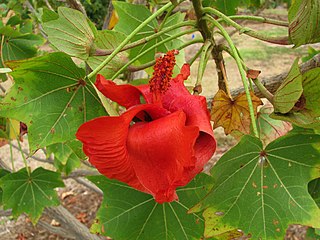 W
WKokia cookei is a small, deciduous tree commonly known as the kokiʻo, Molokaʻi treecotton, Cooke's kokiʻo, or Molokaʻi kokiʻo.
 W
WLaelia gouldiana is a plant of the orchid genus Laelia.
 W
WMammillaria glochidiata is a species of plant in the family Cactaceae. It is endemic to Mexico. Its natural habitat is hot deserts. It was classed as Extinct in the wild but since 2013, it has been classed as Critically Endangered by the IUCN Red List.
 W
WNymphaea thermarum is the world's smallest water lily. The pads (leaves) of N. thermarum can measure only 1 cm (0.39 in) across, less than 10% the width of the next smallest species in the genus Nymphaea. By comparison, the largest water lily has pads that can reach 3 m (9.8 ft). All wild plants were lost due to destruction of its native habitat, but it was saved from extinction when it was grown from seed at the Royal Botanic Gardens, Kew in 2009. In January 2014, a surviving water lily was stolen from the Royal Botanic Gardens.
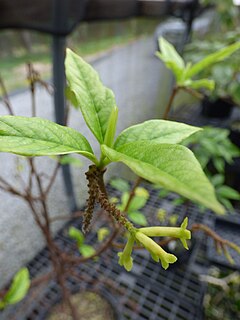 W
WWikstroemia villosa, the hairy wikstroemia or hairy false ohelo, is a tropical species of plant in the Thymelaeaceae family.